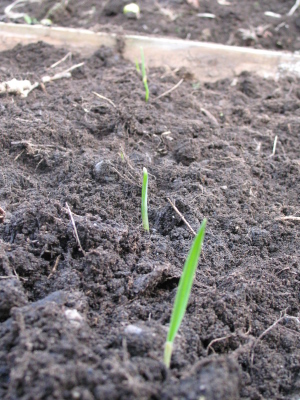Let your new seeds soak in a dark spot overnight. Put a few seeds in a small container and fill it near to the top with water. This will keep seeds hydrated and help them to grow faster. This way, the seeds will have a much better shot at survival once they are planted.
More people are turning to organic horticulture as a hobby and a way to get food. Use the simple advice offered here and you will learn just how to grow a successful garden you can be proud of. Read on to discover some helpful tips and learn how to take advantage of them.
Start your garden by planting seed in small pots. When you grow a new garden, start the environmental way, from seeds. Many nurseries use plastic growing pots that are very seldom recycled. Try buying from organic nurseries and farms so your garden is not using anti-environmental products.
When selecting among several varieties of a plant, choose the ones that will produce the largest yield. Hybrids are usually hardier in terms of disease and weather resistance, and are designed to produce more.
Have one plant be the most interesting eye-grabber in your garden. In any good garden design, a focal point will grab the eye and hold it there. Quite often a distinctive plant works well as a point of interest.
Flower Garden
Protect cuts from dirt and chemicals, and think about staying away from gardening until they heal. Your cut could get infected if you’re dealing with grime and dirt when gardening. Bandages are available that will completely cover the cut so that this cannot happen.
Plant a variety of flowers to keep your flower garden colorful and interesting. Annuals and biennials can add excitement and interest to your flower garden every season. Using a variety of flowers allows your flower garden to have a different look each season. You can fill any spaces between shrubs and perennials when they are in the sun. Notable collections include sunflower, marigold, hollyhock, rudbeckia, cosmos, and petunia.
When planting seeds, it is wise to take your time. The first step is to moisturize the soil. Next, you should evenly distribute the seeds ensuring that each one has enough room to grow. Typically, seeds should be planted at a depth that is equal to three times their size. However, there are some seeds that need light to germinate, so be sure to check your seeds planting instructions.
To get the best results, you must use the right soil. Fertilizer can enrich the soil to make it more viable. You can also make an artificial area using only one type of soil.
A good thing to know when it comes to your organic garden, and running it, is to, a couple times a day, lightly ruffle the seedlings with cardboard or your hand. Although this method may seem counterproductive, it actually helps the seeds to grow quicker and stronger.
When fall is here, you need to plant autumn edibles. Why not plant lettuce and kale inside a hollowed-out pumpkin? Clean out the pumpkin just like you would if you were making a jack o’lantern. Spray Wilt-Pruf inside the pumpkin and along its edges so that the pumpkin won’t rot. You can now use it to plant in, as you would a pot.
In order to start a garden, you are going to need to know how to make beds. To begin your bed, slice under the grass with a spade. Flip the turf upside down, then cover the area with wood chips. Leave it to settle for a couple of weeks and then you will be able to plant within it.
Coffee Grounds
Go ahead and dig a hole so that you can plant a shrub or tree for your organic garden. If the hole that you create for them has any “glazed” sides that were caused by a shovel, then it may restrict the root from penetrating into the nearby soil.
If a test indicates that your soil is very alkaline, you can mix the dirt with used coffee grounds. Using coffee grounds is a less expensive way to make your soil more acidic than trying to replace your topsoil. The greens and vegetables need the proper balance and will grow bigger and stronger with the right mix.
Use at least three inches of organic materials to mulch trees and flowers. Doing this will benefit the environment, as well as reduce your water bills. Mulching is not only frugal, it is also quite attractive.
An organic garden takes time and patience, as we have previously advised. These tips can be put to use so you can see how great growing a garden can be. Regardless of which organic crops you choose to grow, these tips will help you enjoy a bountiful harvest.
When you maintain your organic garden during winter, use materials from home to make a tent. Take a few bean poles and place them at the corners of your plant beds. Position a bed sheet over the poles, and add bricks around the edges to hold down the sheet. This is a reasonably cheap way to build a tent to keep your crops safe during winter, look up other ways you can do this online, or in gardening books.
